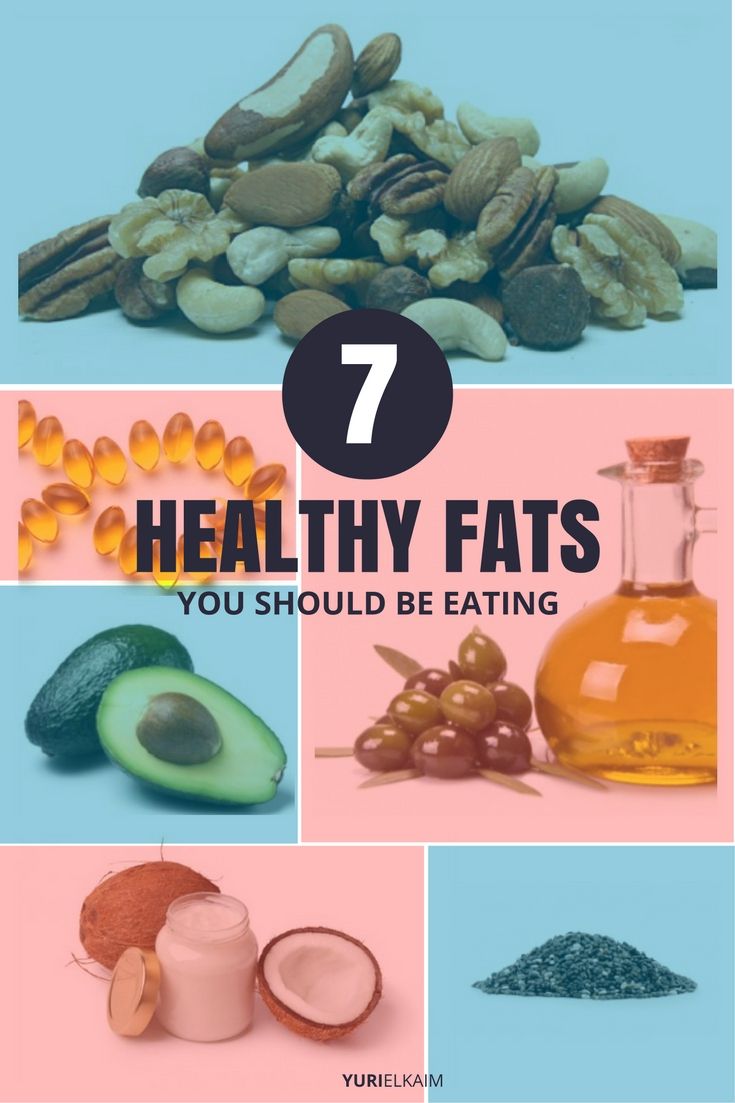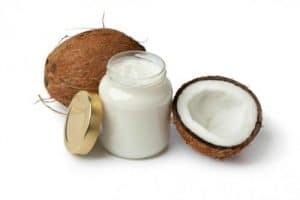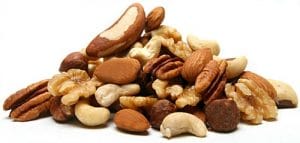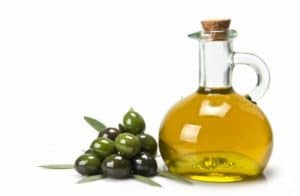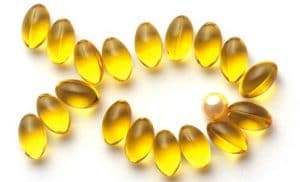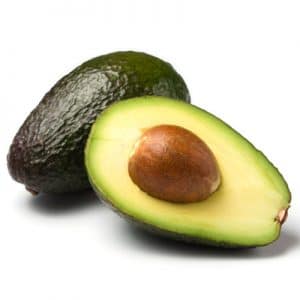When it comes to our relationship with fat, it’s been complicated.
In this article
For years, we took fat for granted, but in the 1970s, when scientists began linking diet with the disease, things got rocky.
That’s when well-meaning experts – using the scant amount of then-available evidence – devised the first set of dietary guidelines. They told us to cut back on fat in order to help avoid health risks.
And boy did we listen. By the 1990s most of us firmly embraced the low-fat craze.
Foods marked as “low-fat” or “fat-free” flew off grocery shelves. These products slashed the fat content by loading up on sugar, but we didn’t understand the downside.
We were fed a simple message: eating fat means getting fat, so we avoided it at all costs.
In fact, we even had a brief, ill-fated love affair with the fake-fat Olestra, which added no fat or calories to food but did have nasty side effects like cramping and anal leakage.
The Skinny on Dietary Fat
These days, we’re on the path to reconciling with fat, as we realize that maybe we were wrong – and that we need to include it as an essential part of our diet.
But there’s still a subset of the population that clings to the belief that dietary fat = body fat.
This couldn’t be further from the truth, because fats are a key player in our physiology.
Among all of their functions, fats help us:
- Create several essential hormones
- Power our cells with energy
- Maintain our internal body temperature
- Absorb certain nutrients
- Form our cell membranes
Long story short: we could not function without fat in our diets.
But the truth is, not all fats are equal.
Some fats really should be avoided while others should be a staple in a healthy diet.
So which are considered healthy fats?
Unsaturated Fat
When most people refer to “heart-healthy fats,” they’re referring to unsaturated fats, and they’re a prime player when your diet is focused on eating for energy, health, and fat loss.
These fats, broken up into monounsaturated and polyunsaturated subcategories, are revered for their health-promoting properties.
Monounsaturated fats are found in:
- Olive oil
- Canola oil
- Peanut oil
- Avocados
- Almonds
- Cashews
- Hazelnuts
- Macadamia nuts
- Pecans
Polyunsaturated fats are common in:
- Fatty fish
- Flaxseed
- Soybean oil
- Corn oil
- Sunflower oil
- Walnuts
- Pine nuts
- Pumpkin seeds
- Sunflower seeds
The current dietary guidelines recommend replacing trans fats and saturated fats with unsaturated fats to promote heart health.
Saturated Fat
Saturated fats have been the victim of a great deal of controversy when it comes to heart health.
Saturated fats are primarily found in:
- Fatty cuts of meat (beef, pork, and lamb)
- Processed meats (sausages, hot dogs, bacon, and deli meats)
- Tropical oils (coconut oil, palm oil, and cocoa butter)
- Milk
- Butter
- Cheese
- Chocolate
Here’s what we know when it comes to saturated fat:
Saturated fat is linked to a rise in LDL (“lousy”) cholesterol levels, which moves through the bloodstream depositing plaque and causing arteries to narrow.
But it’s also been shown to increase HDL (“healthy”) cholesterol, which acts as a scavenger moving through the blood and cleaning up buildup plaque (1).
There’s also a good deal of research that has concluded that saturated fat is not associated with an increase in cardiovascular disease, effectively debunking the myth that we should all switch over to margarine ASAP or face the cardiac consequences (2).
Trans Fat
Hydrogenation is a process that turns fats into solids at room temperature, creating a special type of fat dubbed trans fats.
Trans fats are commonly found in:
- Processed foods
- Fried foods (french fries, fried chicken, and breaded fish)
- baked goods (cookies, cakes, pastries, and doughnuts)
- Partially hydrogenated vegetable oils (used in some margarine and commercially prepared baked goods)
- Fast food items (burgers, fried chicken, and some desserts)
- Non-dairy creamers and coffee whiteners
This type of fat should absolutely be avoided at all costs.
Trans fats have a strong link to heart disease, and studies show that getting even 2 percent of your calories from trans fats drives up your risk of developing heart disease by 23 percent (3).
7 Top Examples of Healthy Fats
Now that you have a pretty good understanding of why we need fats and which kinds are beneficial, let’s take a look at some examples of healthy fats to eat:
1. Coconut Oil
Coconut oil is all the rage right now and for a good reason.
It boasts a myriad of health benefits and is one of the prime examples of healthy fats you should be incorporating in your diet.
Coconut oil is awesome because it has been shown to kickstart fat burning (4).
It also contains lauric acid, a medium-chain fatty acid that has anti-fungal, anti-bacterial, and anti-viral properties.
Plus, coconut oil is great for your heart because it reduces cholesterol levels and is good for your brain by providing an alternate source of energy for brain cells.
Not to mention, it’s anti-inflammatory and contains a wide assortment of antioxidants.
Add coconut oil to your diet by mixing it into yogurt, oatmeal, or smoothies. Alternatively, try baking with coconut oil in place of other types of fat for a heart-healthy treat.
2. Nuts
Nuts – like walnuts, almonds, and pecans – are brimming with healthy fats.
While all nuts contain a different nutrient profile, they are all rich in the heart-healthy fats we need in our diet.
Best of all? Nuts are a great plant-based source of omega-3 fatty acids, which help drop the risk of heart disease and support mental health.
Keep in mind that nuts also contain omega-6 fatty acids, which have been shown to be pro-inflammatory.
While nuts contain plenty of antioxidants, vitamins, and minerals that make them a great addition to the diet, portions should be limited to about an ounce (or 1/4 cup) to keep your omega-6 intake in check.
Go for the unsalted version to minimize your sodium intake and always measure out your portions or you might end up eating more than you bargained for.
Add to salads for a tasty crunch, make a batch of homemade trail mix, or start your morning with a healthy homemade cereal to increase your nut intake.
3. Olive Oil
As one of the most well-known and studied healthy fats, it’s safe to say that olive oil definitely makes the list when it comes to the healthiest fats.
Olive oil is rich in monounsaturated fatty acids plus antioxidants and vitamins. It’s been studied extensively for its heart-healthy effects, ability to relieve inflammation, and gift for preventing oxidative damage.
The one caveat is that, contrary to popular belief, olive oil should not be used in cooking.
When exposed to heat, fatty acids can oxidize and become damaged, losing out on some of their health benefits.
Use olive oil in food preparation, mixed into a salad dressing or drizzled over vegetables to add a quick burst of flavor.
4. Chia Seeds
These small seeds are jam-packed with nutrients and contain a good amount of healthy fats. They are also an excellent source of omega-3 fatty acids, containing more omega-3s than salmon, gram for gram.
Chia seeds also have a number of other benefits, containing good amounts of protein, fiber, and micronutrients.
Chia seeds are super easy to incorporate into the diet and add a unique texture to any foods. Mix with your coconut milk, nut milk, or oatmeal for a dose of healthy fats and nutrients.
Try these recipes:
5. Fish Oil
Known for its powerful health benefits, you can get fish oil easily through a concentrated supplement or through the intake of fatty fish, like salmon or tuna.
Fish oil is bursting with omega-3 fatty acids, including the two most beneficial types, eicosapentaenoic acid (EPA) and docosahexaenoic acid (DHA).
Fish oil has been tied to a wide variety of health benefits, from weight loss to keeping skin clear.
Most importantly, fish oil has been demonstrated as an effective way to protect your heart by decreasing triglycerides and bumping up levels of healthy HDL cholesterol (5).
It can be tricky to squeeze in the recommended two servings per week of fish, but a little effort and experimentation can make it a breeze.
Set aside a few days each week where you sub your usual protein source for fish and don’t be afraid to try new recipes to make it even easier (and more delicious) to meet your goal.
6. Avocado
Good news: everyone’s favorite fatty fruit is full of the good kinds of fat.
Avocado is an awesome source of heart-healthy monounsaturated fats, which is what gives it its characteristic rich and creamy flavor.
If you’re looking for a few simple non-guac recipes to up your avocado intake, try adding it to a summer salad, a delicious green smoothie, or even subbing it for your other fat sources in baked goods.
It sounds a little odd, but avocado lends its amazing velvety texture to desserts and is sure to distract from its vibrant green color.
Try these recipes:
7. Flaxseed
Often considered one of the best plant-based sources of omega-3 fatty acids, flaxseed is brimming with health benefits.
Flaxseed is rich in alpha-linolenic acid, an essential fatty acid that our body isn’t able to produce on its own. Additionally, it’s full of antioxidants and fiber to promote full-body health.
Flaxseed can add a subtle nutty flavor to your cereal, oatmeal, or morning smoothie. Sprinkle it over sandwiches or soups for a unique crunch.
Try these recipes:
Fat is Your Friend
So there you have it, folks.
Fat may be higher in calories than other macronutrients, but the word “fat” no longer needs to invoke a sense of fear or send a shiver down your spine.
Instead, embrace it and make sure your diet includes a generous dose of good fats to optimize your health.
Good Fats, Good Food
Want some meal ideas that will help you sneak healthy fats – and other key nutrients – into your diet?
Be sure to get your copy of the All Day Energy Diet Community Cookbook, which features 67 gluten- and dairy-free meals that are low in other allergens but high in taste and nutrition.
You can get a copy of the book for FREE by clicking the banner below.

